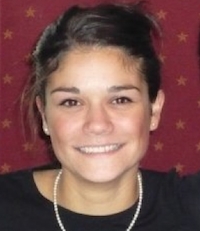‘Cortical reorganisation’ is a commonly used term in pain. In CRPS there has long been evidence of cortical changes; specifically that representation of the CRPS-affected hand in the primary somatosensory cortex (S1) is smaller than that of the S1 representation of the other, healthy, hand [1-5]. In 2015 we performed our own functional MRI investigation on this question and our findings surprised us. We did not find a smaller S1 representation of the affected hand, rather we found an enlarged representation of the healthy hand [6]. We wanted to explore this further. And that’s what led us to this current paper, An exploration into cortical reorganisation of the healthy hand in complex regional pain syndrome [7].
The obvious explanation for an apparently enlarged S1 representation of the healthy hand is use. It makes sense that if one hand is affected by CRPS then the other hand must compensate in daily life, and maybe the cortical changes – the enlargement – might reflect this. So we embarked on this current exploration wanting to know whether the S1 representation of the healthy hand is associated with altered hand use in response to CRPS. Specifically we were interested in whether the size of the S1 representation of the healthy hand is associated with the severity of the functional impairment of the CRPS-affected hand. We also thought that CRPS of longer duration might result in more extended use of the healthy hand, so we investigated whether we could find a positive relationship between the S1 size of the healthy hand and CRPS duration.
This study used neuroimaging data on 12 CRPS patients and 10 pain-free controls. Unfortunately (and I think we can be forgiven for this) we didn’t collect a lot of data on the healthy hand in our original MRI investigation. We did not obtain any objective measure of movement or use – and that, in hindsight, would have been very sensible to collect. However, we did collect subjective data on the use of the CRPS-affected hand, on overall daily function, and on self-efficacy – which is the belief in one’s own ability to achieve a desired outcome, in this case despite pain. So we used these measures to infer compensatory use. And we investigated the relationship between this inferred compensatory and the S1 representation of the healthy hand with multiple regression models. We also investigated the correlation between S1 representation of the healthy hand and CRPS duration.
We were surprised by our findings (again). We found that there was no relationship between the size of the healthy hand in S1 and the severity of functional impairment of the CRPS-affected hand relative to overall daily function or self-efficacy. We did not even find a trend. So the apparent enlargement of the S1 representation of the healthy hand doesn’t seem to reflect the extent to which the affected hand is incapacitated by CRPS. We also did not find any relationship between the S1 representation of the healthy hand and CRPS duration, which, again, did not support the notions we went in with.
There are a few things to note in the interpretation of these findings. We were careful to account for hand dominance in our analyses, because we had evidence from our previous neuroimaging investigation of a difference in dominant and non-dominant hand representation size in healthy controls. It is possible that a different pattern of S1 representation might arise depending on whether the CRPS affects the dominant or nondominant hand – unfortunately numbers would have been too small in each group to validly investigate this here.
What’s interesting is that as well as being nonsignificant, the relationships we found were also very small, implying that even if we were underpowered here and instead investigated these relationships with a larger sample, the results are unlikely to be meaningful in trying to explain the effect of use on S1 cortical representation. That we found no relationship between S1 representation and the duration of CRPS signs and symptoms is intriguing and raises some novel possibilities: is the difference in S1 representation between hemispheres pre-morbid and does it reflect a vulnerability to CRPS onset? Or might the difference between hemispheres arise early on in the disease, for instance soon after injury or during immobilisation?
While these questions are highly speculative and much work remains to be done before we have any definitive answers, it seems that the S1 cortical enlargement of the healthy hand is not explained by compensatory use in response to CRPS.
About Flavia Di Pietro
 Flavia Di Pietro completed her PhD with the Body in Mind Sydney group early in 2014. Her project used functional MRI to investigate the brain’s patterns of activity in people with complex regional pain syndrome (CRPS) of the upper limb. She now works as a post-doctoral researcher at the University of Sydney with Associate Professor Luke Henderson. They are researching the electrical and chemical function of the brain in people with chronic orofacial pain. She is also one of the Commissioning Editors on BiM
Flavia Di Pietro completed her PhD with the Body in Mind Sydney group early in 2014. Her project used functional MRI to investigate the brain’s patterns of activity in people with complex regional pain syndrome (CRPS) of the upper limb. She now works as a post-doctoral researcher at the University of Sydney with Associate Professor Luke Henderson. They are researching the electrical and chemical function of the brain in people with chronic orofacial pain. She is also one of the Commissioning Editors on BiM
References
[1] Di Pietro, et al. Primary somatosensory cortex function in complex regional pain syndrome: a systematic review and meta-analysis. J Pain 2013; 14: 1001-18.
[2] Juottonen, et al. Altered central sensorimotor processing in patients with complex regional pain syndrome. Pain 2002; 98: 315-23.
[3] Maihofner, et al. Patterns of cortical reorganization in complex regional pain syndrome. Neurology 2003; 61: 1707-15.
[4] Pleger, et al. Mean sustained pain levels are linked to hemispherical side-to-side differences of primary somatosensory cortex in the complex regional pain syndrome I. Exp Brain Res 2004; 155: 115-9.
[5] Vartiainen, et al. Central processing of tactile and nociceptive stimuli in complex regional pain syndrome. Clin Neurophysiol 2008; 119: 2380-8.
[6] Di Pietro, et al. Interhemispheric somatosensory differences in chronic pain reflect abnormality of the healthy Hum Brain Mapp 2015; 36: 508-18.
[7] Di Pietro, et al. An exploration into the cortical reorganisation of the healthy hand in upper-limb complex regional pain syndrome. Scan J Pain 2016; 13: 18-24.



